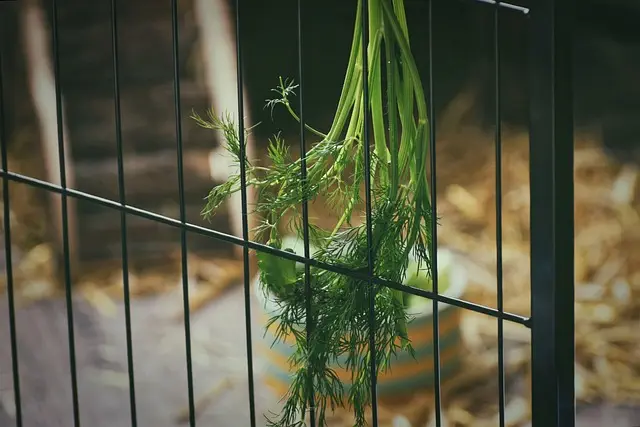The article discusses the anti-inflammatory properties of the kratom live plant, a tropical evergreen tree native to Southeast Asia. Specifically, it highlights the compounds mitragynine and 7-hydroxymitragynine found in kratom leaves, which exhibit analgesic and anti-inflammatory effects by interacting with various body receptors, including opioid receptors. Preclinical studies indicate that kratom extracts can suppress inflammation markers, suggesting a therapeutic potential for treating inflammatory disorders. The article emphasizes the benefits of using the live plant over synthetic anti-inflammatories due to its complex mix of compounds, which may act synergistically to reduce inflammation more effectively. Research is ongoing to understand the mechanisms behind kratom's effects and to explore its potential for safe and effective therapeutic use. The cultivation of the kratom live plant from seed requires careful attention to soil quality, moisture levels, and sunlight to preserve the plant's natural compounds and ensure safety. Sustainable and clean cultivation practices are crucial for maintaining the therapeutic potential of kratom while minimizing risks. Ensuring optimal growing conditions is essential for producing high-quality kratom live plants with rich alkaloid profiles, which are key to their anti-inflammatory efficacy. Proper environmental and soil monitoring is necessary to sustain the integrity and potency of these alkaloids, contributing to the plant's therapeutic benefits and promoting both individual health and the sustainable preservation of the kratom species.
Exploring the therapeutic potential of natural remedies has garnered significant interest in recent years, particularly with the emergence of kratom as a subject of scientific inquiry. This article delves into the inflammation-reducing benefits offered by the kratom live plant, scientifically known as Mitragyna speciosa. We will uncover the mechanisms behind its anti-inflammatory properties and provide guidance on safely cultivating and utilizing this botanical for therapeutic purposes. Join us as we navigate the intersection of traditional use and modern science to understand how kratom live plants can play a role in inflammation reduction.
- Unraveling the Potential of Kratom Live Plant for Inflammation Reduction: An Overview
- The Science Behind Kratom Mitragyna Speciosa and Its Anti-Inflammatory Properties
- Navigating the Safe Use and Optimal Cultivation of Kratom Live Plants for Therapeutic Benefits
Unraveling the Potential of Kratom Live Plant for Inflammation Reduction: An Overview

Kratom, a tropical evergreen tree native to Southeast Asia, has garnered attention for its potential anti-inflammatory properties, particularly when considering the use of the live plant. The active compounds found in kratom leaves, primarily mitragynine and 7-hydroxymitragynine, have been studied for their analgesic and anti-inflammatory effects. These alkaloids interact with various receptors in the body, including opioid receptors, which may contribute to their anti-inflammatory actions. Preclinical studies have demonstrated that kratom extracts can inhibit inflammation markers, suggesting a therapeutic potential for addressing inflammatory conditions. The live plant offers a more natural and potentially less processed alternative to synthetic anti-inflammatories, offering a broader spectrum of beneficial compounds that may work synergistically to reduce inflammation. Research is ongoing to fully understand the mechanisms behind kratom’s anti-inflammatory effects and how the live plant can be utilized effectively and safely for therapeutic purposes. As scientific investigation continues, the use of kratom in its natural form presents an intriguing avenue for those seeking alternative approaches to managing inflammation.
The Science Behind Kratom Mitragyna Speciosa and Its Anti-Inflammatory Properties

Mitragyna speciosa, commonly known as kratom, has garnered attention for its potential anti-inflammatory properties, which are rooted in its complex chemical makeup. The leaves of the kratom plant contain a variety of alkaloids, including mitraphylline and 7-hydroxymitragynine, which are believed to play significant roles in modulating inflammation. Scientific studies have indicated that these compounds may interact with the body’s immune response, helping to reduce the production of pro-inflammatory cytokines—cell signaling proteins that can lead to inflammation when overproduced. The anti-inflammatory effects of kratom are thought to be due to its ability to inhibit certain pathways and enzymes involved in the inflammatory process, potentially offering relief for conditions characterized by chronic inflammation.
The potential of kratom as a natural anti-inflammatory agent is an area of ongoing research, with findings suggesting that the live plant may offer benefits beyond those provided by isolated alkaloid compounds. The live kratom plant contains a balanced and synergistic mixture of alkaloids and other phytoconstituents, which may contribute to its efficacy in reducing inflammation. This holistic approach to treatment is particularly appealing for individuals seeking natural alternatives to manage inflammatory conditions. As the scientific community continues to explore the mechanisms behind kratom’s anti-inflammatory properties, it remains a subject of interest and investigation for those interested in the intersection of botanical medicine and inflammation reduction.
Navigating the Safe Use and Optimal Cultivation of Kratom Live Plants for Therapeutic Benefits

Kratom, a tropical evergreen tree native to Southeast Asia, has gained attention for its potential therapeutic benefits, particularly in the realm of inflammation reduction. Prospective users interested in harnessing kratom’s properties through live plants should prioritize safe and responsible cultivation practices. Growing kratom from seed requires careful attention to soil quality, moisture levels, and optimal sunlight exposure to foster healthy plant development. The alkaloids present in the leaves of kratom, namely mitragynine and 7-hydroxymitragynine, are believed to contribute to its anti-inflammatory effects. To ensure the safety and efficacy of using kratom live plants, it is crucial to follow sustainable cultivation methods that preserve the plant’s natural constituents without introducing contaminants or harmful substances. By adhering to these guidelines, one can cultivate kratom in a controlled environment that maximizes its beneficial compounds while minimizing potential risks associated with its use.
Furthermore, understanding the right conditions for kratom’s growth is key to achieving a high-quality product. The best kratom live plant will have leaves rich in alkaloids, which are most potent when the plant is grown under the right conditions. Regular monitoring of nutrient uptake and environmental factors such as humidity and temperature is essential for maintaining the integrity of the plant’s alkaloid profile. Additionally, soil pH levels should be carefully managed to ensure optimal alkaloid concentration. By respecting these cultivation requirements, users can obtain kratom with a higher likelihood of achieving the desired therapeutic effects, particularly in inflammation reduction, while also promoting the sustainability and longevity of this valuable plant species.
Kratom, particularly in its live plant form, has demonstrated promising anti-inflammatory potential based on scientific evidence and cultivation practices that ensure safety and efficacy. This article delved into the multifaceted nature of kratom as a therapeutic agent, highlighting the significance of its active alkaloids, primarily mitragynine and 7-hydroxymitragynine, in reducing inflammation. As stewardship over this natural resource is crucial for sustained benefits, understanding optimal cultivation methods becomes paramount. By adhering to safe use guidelines and responsible farming techniques, the therapeutic potential of kratom live plants can be realized responsibly, offering hope for those seeking alternative inflammation reduction strategies.






